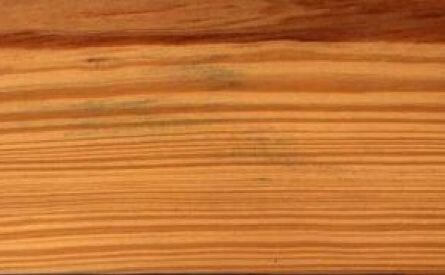CARIBBEAN PINE
Pino Caribe / Pinus caribaea

Local Names
Pitch Pine, Ocote, Pino Cubano, White Pine.
Distribution & Tree
Caribbean pine, also known as Honduras pitch pine, is found through Belize, Honduras, Nicaragua, and Guatemala as well as parts of the Caribbean. It grows from sea level up to around 1,000 meters of elevation and thrives in poor, degraded soils with acidity as low as pH 4.3. It’s been introduced as a plantation species throughout the world and is one of the most common plantation woods in Guatemala. Grows to a height of 30 ft and with trunk diameters of 100 cm.
Wood Appearance
Heartwood is golden brown to reddish brown, depending on resin content. Its texture is somewhat coarse with a straight grain, medium luster medium, and resinous odor. The wood has a tight grain structure.
Processing Properties
The wood is easily workable with hand or machine tools. High resin contents may cause some gumming of cutting implements. It takes nails and screws well and glues satisfactorily. It stains well with a variety of finishes.
Strength & Durability
The heartwood is moderately durable and quite stable. Caribbean is extremely dense, strong and hard for a pine, more so than Southern yellow, radiata and slash, and on par with maple and red oak. The wood is moderately resistant to insect, termite and decay, particularly when resin content is high. It should be treated if exposed to the elements. The sapwood is highly permeable and easily treated by submersion and pressure-vacuum systems.
Wood Uses
House framing, paneling, exterior cladding, carpentry, doors and windows, flooring, joinery, turnery, utility poles and railroad crossties, Persian blinds, boat building, vats, and utility plywood. It makes excellent flooring. Treatment is suggested for exterior use.
Ecological & Social Importance
Caribbean pine is an excellent substitute for reclaimed heart pine. The longleaf pine, the favored tree for heart pine, nearly went extinct due to logging even though they once covered millions of hectares from Virginia to Texas. Today an estimated 3% of native longleaf pine forest remains. Longleaf pine can take more than 100 years to reach full size. Caribbean pine grows far faster, reaching comparable quality at 25 to 30 years of age. The collection and export of seed remains an important source of employment in Guatemala. The tree’s resin can be used as an ingredient in paint, varnishes, plastics, oils, gums and a variety of chemical and pharmaceutical products.
| Reference Species with Similar Density & Hardness | ||||
| Technical Characteristics | Caribbean Pine | Black Maple | Black Walnut | |
| Density | kg/m3 | 630 | 640 | 610 |
| Janka Hardness | kgf | 504 | 535 | 458 |
| Bending Stiffness (Modulus of Elasticity) | GPa | 12.0 | 11.2 | 11.6 |
| Bending Strength (Modulus of Rupture) | MPa | 92.0 | 91.7 | 100.7 |
| Crushing Strength | MPa | 54.4 | 46.1 | 52.3 |
| Shrinkage, Radial | % | 6.3% | 4.8% | 5.5% |
| Shrinkage, Tangential | % | 7.8% | 9.3% | 7.8% |
| Shrinkage, Volumetric | % | 12.9% | 14.0% | 12.8% |
| T/R Ratio | 1.2 | 1.9 | 1.4 | |
| Values determined at 12% humidity - Provided for reference only | ||||
|---|---|---|---|---|
DENSITY
JANKA HARDNESS
BENDING STIFFNESS
BENDING STRENGTH
CRUSHING STRENGTH
SHRINKAGE
Values are for reference only and cannot be guaranteed. Wood is a natural material and physical and mechanical properties may vary depending on age, genetics, and other factors. We encourage customers to consult the references provided in the bibliography. For further explanations of wood’s key technical characteristics, an excellent resource is the Wood Database with articles on Density (average dried weight); Janka hardness; Elastic Modulus; Rupture Modulus; Crushing Strength; Radial, Tangential and Volumetric Shrinkage.






